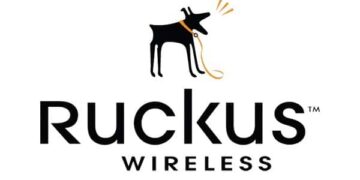Session STO2496 with Rawlingson Rivera (VMware), Chad Sakac (EMC), and Vaughn Stewart (Pure Storage)
Simplicity is the key to success:
- Use large datastores
- Limit use of RDMs
- Use datastore clusters
- Use array automated tiering storage
- Avoid jumbo frames for iSCSI and NFS
- KISS gets you out of jail a lot
- Use VAAI
- Use plug-able storage architecture
Key Best Storage Best Practice Documents – Use your vendor’s docs first. VMware docs are just general guidelines.
Hybrid arrays – Use some degree of flash and HDD. Examples are Nimble, Tintri, VNXe, etc.
Host caches such as PernixData, VFRC, SanDisk.
Converged Infrastructure such as Nutanix and Simplivity.
All flash arrays such as SollidFire, ExtremIO, Pure Storage
Data has active I/O bands – the working set size. Applications tend to overwrite the most 15% of data.
Benchmark Principles
- Don’t let vendors steer you too much – Best thing is to talk to different customers
- Good benchmarking is NOT easy
- You need to benchmark over time
- Use mixed loads with lots of hosts and VMs
- Can use slob or IOMETER and configure to set different IO sizes
- Don’t use an old version of IOMETER. A new version was released about six weeks ago
- Generating more than 20K IOPS out of one workload generator is hard. If you want 200K IOPS, you will likely need 20 workers
Architecture Matters
- Always benchmark under normal operations, near system capacity, during system failures
- Always benchmark resiliency, availability and data management features
- Recommend testing with actual data
- Dedupe can actually increase performance by discarding duplicate data
- Sometimes all flash array vendors will suggest increasing queue depth to 256, over the default of 32
- Queues are everywhere
Storage Networking Guidance
- VMFS and NFS provide similar performance
- Always separate guest VM traffic from storage VMkernel network
- Recommendation is to NOT use jumbo frames – 0 to 10% performance gain with it turned on
- YMMV
Thin provisioning is not a data reduction technology
Data reduction technologies are the new norm: Dedupe block sizes change (512b Pure, 16KB 3PAR, 4KB NetApp)
- There is a big operational difference between inline and post-process
Data reduction in virtual disks (better in Hyper-V than vSphere 5.x): T10 UNMAP is still a manual process in vSphere
Quality of Service
- In general QoS does not ensure performance during storage maintenance or failures
- Many enterprise customers can’t operationalize QoS and do better with All flash arrays
- QoS can be important capability in some storage processor use cases
- With vVols there may be a huge uptick in QoS usage
VMware Virtual SAN Integration
- Unparalleled level of integration with vSphere
- Enterprise features: NIOC, vMotion, SvMotion, DRS, HA
- Data protection: Linked clones, snapshots, VDP advanced
- Policy based management driven architecture
- VSAN best practices: 10Gb NICs, Use VDS, NIOC, queue depth of 256, don’t mix disk types in a cluster
- Uses L2 multicast
- 10% of the total capacity should be in the flash tier
Automation
- Automate everything that you can
- Do not hard code to any vendor’s specific API
- Do not get hung up on Puppet, Chef, vs. Ruby, etc.






I'm curious on the "Avoid jumbo frames for iSCSI and NFS". Can you expand on this? Is this just for the KISS approach or is there just not enough performance benefit from it these days to justify the added config? I've been doing Jumbo frames on all installs and haven't had any negative experience other then the added setup time which is pretty minimal on FlexPod type designs.
-Adam Bergh
@ajbergh http://www.thepartlycloudyblog.com
Yes the basis of the recommendation is KISS. Human error in the datacenter is a leading cause of downtime. If you have standardized on jumbo frames and your network team won't accidentally disable them, then I would leave them enabled. For customers considering jumbo frames, unless you are bumping up against CPU utilization bottleneck or maxing out the network links, I would KISS the network and not use jumbo frames.